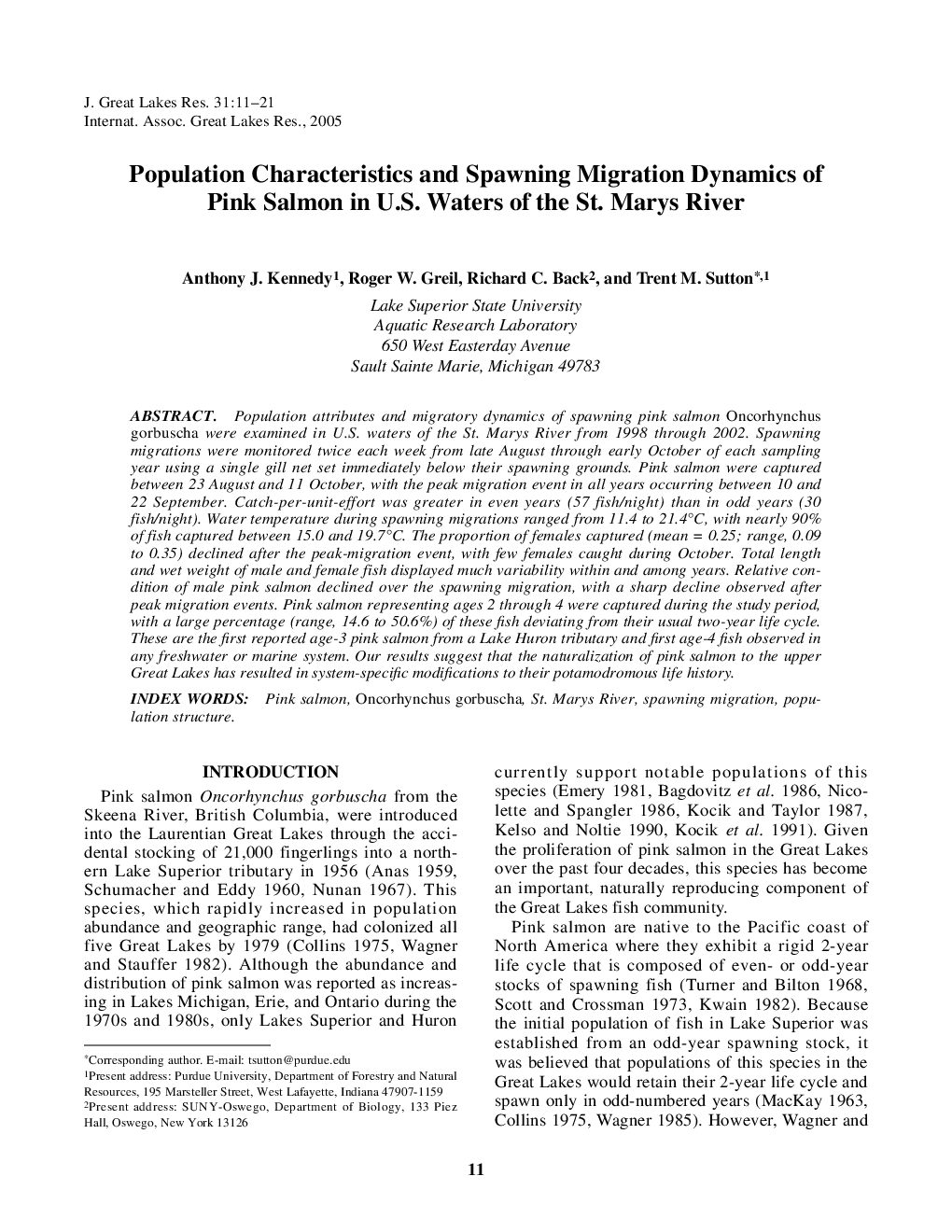| Article ID | Journal | Published Year | Pages | File Type |
|---|---|---|---|---|
| 9450204 | Journal of Great Lakes Research | 2005 | 11 Pages |
Abstract
Population attributes and migratory dynamics of spawning pink salmon Oncorhynchus gorbuscha were examined in U.S. waters of the St. Marys River from 1998 through 2002. Spawning migrations were monitored twice each week from late August through early October of each sampling year using a single gill net set immediately below their spawning grounds. Pink salmon were captured between 23 August and 11 October, with the peak migration event in all years occurring between 10 and 22 September. Catch-per-unit-effort was greater in even years (57 fish/night) than in odd years (30 fish/night). Water temperature during spawning migrations ranged from 11.4 to 21.4°C, with nearly 90% of fish captured between 15.0 and 19.7°C. The proportion of females captured (mean = 0.25; range, 0.09 to 0.35) declined after the peak-migration event, with few females caught during October. Total length and wet weight of male and female fish displayed much variability within and among years. Relative condition of male pink salmon declined over the spawning migration, with a sharp decline observed after peak migration events. Pink salmon representing ages 2 through 4 were captured during the study period, with a large percentage (range, 14.6 to 50.6%) of these fish deviating from their usual two-year life cycle. These are the first reported age-3 pink salmon from a Lake Huron tributary and first age-4 fish observed in any freshwater or marine system. Our results suggest that the naturalization of pink salmon to the upper Great Lakes has resulted in system-specific modifications to their potamodromous life history.
Related Topics
Physical Sciences and Engineering
Earth and Planetary Sciences
Earth and Planetary Sciences (General)
Authors
Anthony J. Kennedy, Roger W. Greil, Richard C. Back, Trent M. Sutton,
